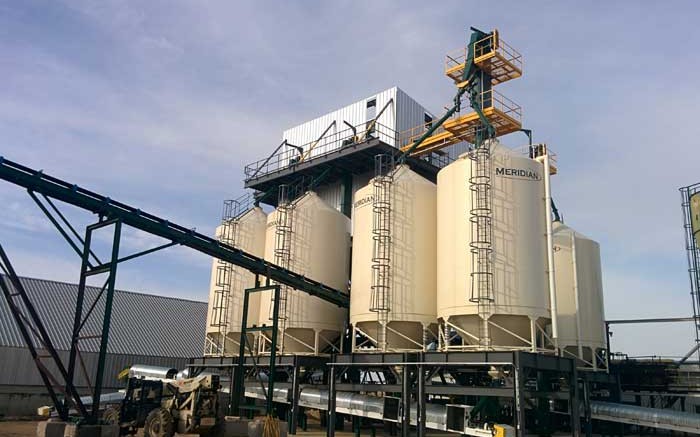Victory Nickel (TSX: NI; US-OTC: VNCKF) didn’t set out to be part of the premium frac sand business.
The company was created in 2006 out of three nickel assets spun out by Nuinsco Resources (TSX: NWI; US-OTC: NWIFF) — the main one being the Minago project in Manitoba.
“As we were drilling it off we pulled the holes and discovered sand,” Victory’s vice-president of corporate affairs Sean Stokes explains. “We thought it was waste until one of our geologists suggested we get it tested to see if it could be used as frac sand.”
That geologist was Jim Chornoby, who still serves as Victory’s lead consulting geologist. He was familiar with the material from his studies for the province of Manitoba on the potential for frac sand discoveries in the province.
In 2007 and 2008, when the discovery was made, frac sand was still an upcoming market, but just a few years later Victory’s management believed in the sand’s economic potential, and included a study of Minago’s sandstone. Its motivation to do so also had something to do with Minago’s considerable sulphide nickel deposit having overburden to overcome.
To reach the nickel required cutting through 50 metres of limestone overburden, and after that another nine metres of sandstone overburden.
The costs of doing so, however, drop considerably when the sandstone layer is recognized as not a burden but a source of valuable fracking sand.
“The economics of the nickel on its own is OK, and the economics of the frac sand on its own is OK,” Stokes says. “But when the two are combined it generates a nice rate of return.”
This doesn’t mean it was an easy sell to the market. Part of the problem was that many nickel investors didn’t fully understand what frac sand is, so the company brought in Ken Murdoch to not only help explain it, but drive the frac sand part of the business to a point where its positive economics would be self-evident.
Murdock — who now serves as the CEO of Victory Silica, a subsidiary of Victory Nickel — has 25 years of experience in the frac sand and cement industries, having permitted, designed and built a number of frac sand facilities in the U.S. and Canada.
He was already familiar with Minago when Victory called, and he was impressed by the 15 million tonnes of sandstone it held, which could translate into 12 million tonnes of frac sand.
Murdock brought another advantage as well. He knew about a plant in Medicine Hat, Alta. — the Seven Persons Plant (7P) — that could take Victory’s interest in frac sand to the next level.
Murdock had been part of the team that built that plant, which was designed to process what is known as ‘blowback sand’ — sand that has been contaminated by use in oil wells and has to be cleaned and reprocessed so that it can be used again.
The plant was ill-fated, however, when the shallow gas drilling around Medicine Hat that supplied the facilities dried up, forcing the plant into receivership in 2010.
Enter Victory. The company recently closed the purchase of the plant and had it re-permitted so that it could process high-quality imported frac sand instead of blowback sand. Doing so means that while it waits to develop Minago, the company can take advantage the Canadian market’s difficulty in securing high-quality sand.
The best fracking sand comes from sandstone, but most of the deposits are in the U.S., and with the country going through a shale gas boom, there isn’t much left for the Canadian market.
Minago has the good stuff, as fracking sand from sandstone has a higher crush resistance and doesn’t have the acid solubility issues that go with lower-quality sands.
“Specific customers want imported sand all the time,” Murdoch explains. “Our model is to always have imported sand available to our customers.”
To offer end-users this premium product, Victory imports sand from Wisconsin and processes it at the 7P plant — all while generating cash flows to develop Minago.
With 7P up and running, the next phase of the plan involves Victory buying the Wisconsin frac sand mine and building a plant there, which will have the same 500,000-tonne-per-annum capacity as 7P.
Phase three of the plan is to build a bigger frac sand plant in Winnipeg that will process sand from Wisconsin and Minago.
The key to understanding Victory’s probability for successis the fact that the North American annual frac sand market peaked in 2009 at 40 million tonnes of production. Since then it has scaled back, and now sits at 36 million tonnes.
But with the recent boom in shale gas production, demand could increase dramatically.
“Our customers are sitting on 50% of their horsepower, that’s horsepower that is parked and ready to work,” Murdoch says. “The market could go to 60 million tonnes of demand in no time.”
While U.S. investor are attuned to those fundamentals, as evidenced by U.S. Silica Holdings (NYSE: SLCA) and Hi-Crush Partners (NYSE: HCLP) being two of the best-performing resource stocks over the last year, Canadian investors have been slower to warm to the story.
“The U.S. equity market is more up to speed on the frac sand business,” Murdoch says. “It’s an educational process up here, but it will come. We’re confident in the business model and we’re confident in what we are doing and in the market.”
On May 30 Victory’s shares traded for 6.5¢, on 600,000 shares traded.


Be the first to comment on "Victory Nickel has the frac sand plan"